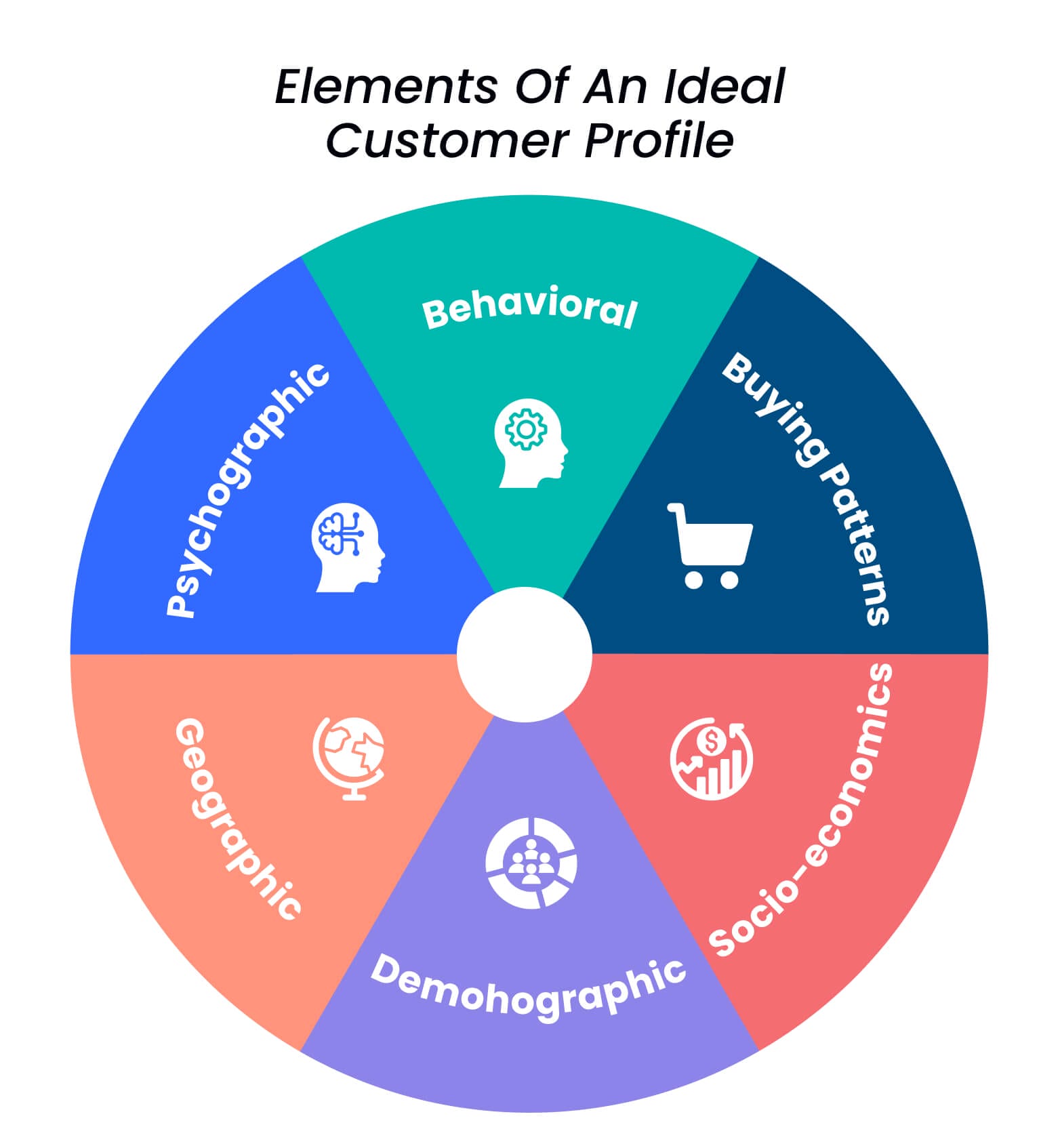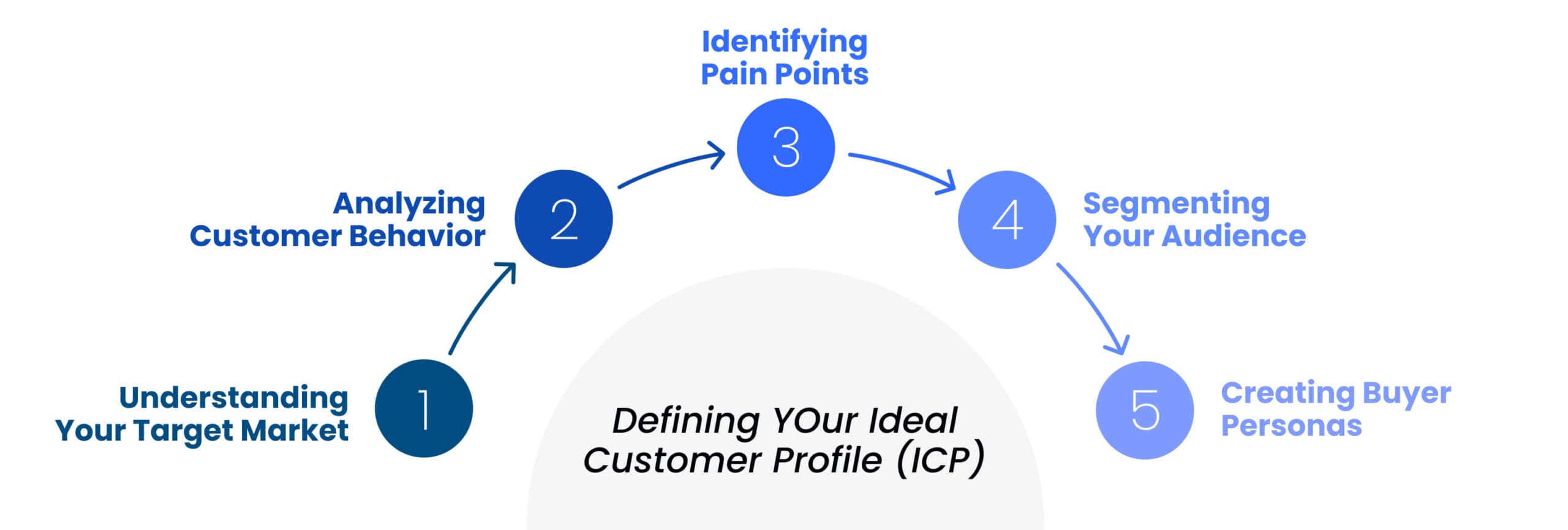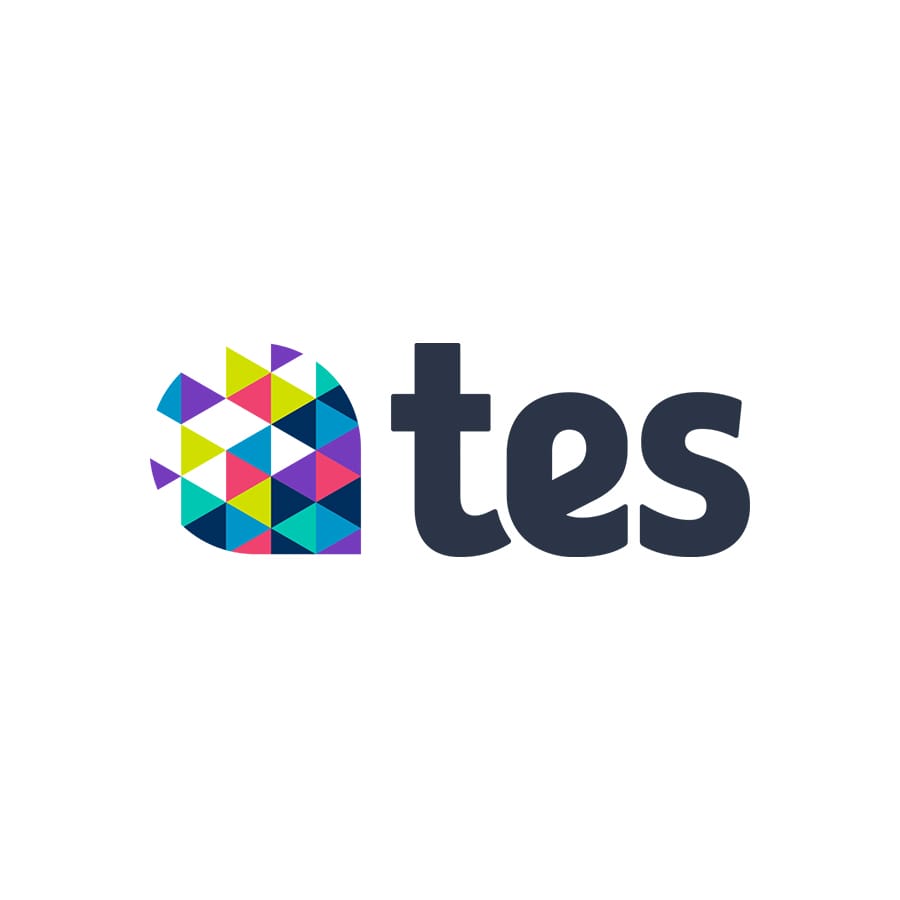Discover the power of Ideal Customer Profiles (ICP) in Account-Based Marketing. This guide explains ICPs, their importance, and how to leverage them for targeted B2B strategies.
What is an Ideal Customer Profile (ICP)?
An Ideal Customer Profile (ICP) is a detailed description of the profile of companies that are most likely to benefit from your product or service and, in return, provide significant value to your business.
It serves as a blueprint for identifying your “perfect” customer, focusing on attributes that increase the likelihood of conversion, retention, and long-term growth.
An ICP defines the businesses most likely to engage with your offering successfully, leading to higher customer satisfaction, loyalty, and return on investment (ROI). Focusing on these accounts allows you to streamline your marketing and sales efforts, ensuring your resources are used efficiently to maximise outcomes.
ICPs are a cornerstone of account-based marketing (ABM). They allow organisations to target high-potential accounts, avoid low-value leads, and ensure that marketing and sales teams are aligned in their strategies.
Why is an ICP Crucial?
An ICP enables companies to focus on accounts with the highest potential for revenue and loyalty, minimising wasted efforts on leads that will lead to disqualification This precise segmentation is especially useful in B2B marketing, where identifying the right companies to engage with can be the difference between successful and unsuccessful marketing activities.
Key Benefits of an ICP:
- Enhanced Efficiency: ICPs enable marketing and sales teams to work more effectively by focusing on accounts that are more likely to be accepted by sales.
- Improved Customer Retention: By targeting companies that align well with your product, you’re more likely to retain these customers long-term.
- Higher ROI: Focusing resources on high-value accounts leads to better outcomes, reducing wasted marketing spend and sales efforts.
ICP vs. Buyer Persona: What’s the Difference?
Both ICPs and Buyer Personas are essential in marketing and sales, but they serve distinct purposes.
Ideal Customer Profile (ICP): This profile describes the ideal company or organisation for your product or service. It focuses on the B2B space and considers firmographics such as industry, company size, location, and budget. The ICP is the first step in identifying which companies to target in your marketing and sales efforts.
Buyer Persona: A semi-fictional representation of the individual decision-makers within the organisations identified by your ICP. These personas focus on personal characteristics such as roles, goals, motivations, and challenges that guide how you communicate with potential buyers within a company.
Key Differences
Scope: ICPs focus on entire organisations, while Buyer Personas target individual decision-makers within those companies.
Application: ICPs help identify the companies you should target, whereas Buyer Personas provide insight into how to approach and communicate with individuals within those companies.
Context: ICPs are especially relevant in ABM strategies, where targeting the right accounts is paramount. Buyer Personas, which tailor messages to individuals, are more widely used in B2B and B2C marketing.
By combining an ICP with Buyer Personas, businesses can build highly targeted, personalised marketing strategies that effectively engage both the right companies and the key individuals within those organisations.
Why is an ICP Important in ABM?
In Account-Based Marketing (ABM), an ICP is the foundation for all outreach. ABM revolves around targeting high-value accounts, and the ICP defines which accounts should be the focus of these efforts. Without an ICP, businesses risk wasting time and resources on prospects that are unlikely to convert or deliver long-term value.
By clearly defining the characteristics of your ideal customer, your ICP ensures that your marketing and sales teams are aligned in their targeting efforts.
This results in:
Higher conversion rates: By focusing on accounts that fit your ICP, your efforts are more likely to resonate with the right audience.
More efficient resource allocation: Your teams can focus on accounts that are most likely to succeed, reducing wasted time and marketing spend.
Increased customer satisfaction: Targeting companies that truly benefit from your product or service increases the likelihood of customer satisfaction and retention.
Facing challenges in implementing ABM? Uncover practical solutions to the most common hurdles in our comprehensive guide, Top ABM Challenges & Solutions for B2B Success. Learn how to align your sales and marketing teams, tailor content effectively, and measure the impact of your ABM initiatives to ensure your marketing strategy hits the mark every time.
Key Components of an Ideal Customer Profile
Creating an accurate ICP requires a deep understanding of the components that make up your best-fit customers. These components fall into several key categories:
Firmographic Data
Industry: Which sectors or niches are most aligned with your product or service? Different industries face unique challenges, and understanding these helps you position your offering effectively.
Company Size: Both employee count and revenue are important. Large enterprises may have different requirements and budgets compared to smaller businesses.
Location: Geographical location may influence the fit, especially if your product is region-specific or subject to local regulations.
Firmographic data helps you understand whether the company’s general characteristics align with your business model, product fit, and sales cycle.
Behavioural Attributes
Buying Behaviour: How does the company typically make purchasing decisions? Do they have a long buying cycle or tend to make quick decisions?
Customer Pain Points: What specific challenges or problems is the company trying to solve? Understanding these pain points helps you create messaging that resonates with their immediate needs.
Behavioural data help you understand how the company operates, what drives their decisions, and what challenges they are looking to overcome. This allows you to position your product or service as the ideal solution to their specific problems.
Technographic Data
Technology Stack: What tools and software does the company currently use? This information can determine whether your product integrates smoothly or requires a major shift in their existing workflows.
Technology Adoption: Is the company a leader in adopting new technology, or do they prefer to stick with familiar processes? Knowing their approach helps you position your product appropriately.
By knowing the company’s current technology setup, you can determine whether your product will integrate smoothly into their workflows or if it will require a larger shift in how they operate. Companies that already use compatible technologies are likely to be easier to convert into customers.
Environmental Factors
Market Conditions: Is the company operating in a growing market? Companies in growing markets are more likely to invest in new solutions to gain a competitive advantage.
Regulatory Environment: Are there specific regulations that impact the company’s decisions? If your product helps them comply with regulations, this could be a key selling point.
Environmental factors provide insight into the external pressures and opportunities that may affect a company’s interest in your solution. Understanding these factors allows you to position your offering in a way that aligns with their broader operational context.
Steps to Create an Ideal Customer Profile
Developing an Ideal Customer Profile is a structured process that requires in-depth analysis, collaboration between teams, and data-driven decision-making.
Below are the three essential steps to creating an effective ICP.
Step 1: Identifying Top-Performing Customers
The first step in creating an ICP is to look at your existing customer base and identify those that are delivering the most value to your business. These top-performing customers are likely to share similar characteristics, and their data will provide critical insights into what defines an ideal customer for your product or service.
To identify your best customers, consider the following factors:
Revenue Generation: Which customers contribute the most to your overall revenue?
Profitability: Are there customers who generate high revenue but also incur significant costs?
Lifetime Value (LTV): Which customers have the highest LTV, and why do they remain loyal?
Customer Advocacy: Customers who promote your brand through word-of-mouth can indicate the type of business you should focus on.
By examining these factors, you can create a shortlist of customers who exhibit the qualities that you would want in future accounts. These top-performing customers form the foundation of your ICP.
Step 2: Analysing Common Characteristics
Once you’ve identified your top-performing customers, the next step is to analyse the common characteristics they share. This involves looking beyond basic demographics to understand their behaviours, needs, and challenges. The more data points you can collect, the more precise your ICP will be.
Consider the following types of data when analysing your best customers:
Firmographics: Are your top customers from the same industry or similar in size?
Technographics: What technologies do they use, and do they align with your product?
Behavioural Data: What were the common reasons for these customers to buy your product?
By identifying patterns and commonalities across these data points, you’ll start to build a clearer picture of what your ideal customers look like. This analysis enables you to target similar accounts more effectively in your future ABM efforts.
Step 3: Collaborating with Sales and Marketing Teams for Data Insights
The final step in creating a robust ICP is to collaborate with both your sales and marketing teams. Since both teams interact with prospects and customers at different stages of the buying journey, they can offer unique insights that contribute to a more complete and accurate ICP.
Here’s how each team can contribute to the ICP development process:
Marketing: Identify the messaging and campaigns that attracted your top customers.
Sales: Provide insights into the buying process, customer motivations, and the challenges faced in closing deals.
Customer Success: Understand what keeps your top customers satisfied post-sale.
The collaboration between these teams ensures that your ICP is based on a holistic view of the customer. Instead of relying solely on marketing metrics or sales figures, you integrate insights from the entire customer journey, from lead generation to post-sale success. This comprehensive approach ensures that your ICP is data-driven and relevant to both attracting and retaining high-value accounts.
Example of an Ideal Customer Profile
To illustrate the above process, let’s take the example of a B2B SaaS company offering HR software. Your ICP might look like this:
Industry: Mid-sized companies in the tech or financial sectors.
Company Size: 200–500 employees.
Annual Revenue: £10M–£50M.
Pain Points: Struggles with managing employee data and payroll across multiple platforms.
Technology Stack: Uses cloud-based platforms such as Salesforce and BambooHR.
Location: Based in the UK, with plans to expand into Europe.
This practical example demonstrates how focusing on specific firmographics, technographics, and pain points can help you identify the perfect-fit companies.
How to Use Your ICP in ABM Initiatives
Once you’ve built a robust ICP, the next step is to integrate it into your ABM strategy. Here’s how to use it effectively:
1. Tailoring Content and Messaging for High-Value Accounts
Customised Messaging: Use the insights from your ICP to tailor your messaging to address the specific pain points, challenges, and goals of your ideal customers. Focus on how your product can solve their problems and deliver value.
Content Alignment: Create content that speaks directly to the needs of your ICP-aligned companies. Whether it’s blog posts, whitepapers, or webinars, your content should align with their industry, technology stack, and challenges.
2. Building Personalised Campaigns for ICP-Aligned Companies
Personalised Outreach: When targeting accounts that match your ICP, personalise your outreach efforts. Use their firmographics and technographics to craft targeted campaigns that resonate with their unique needs.
Account-Specific Outreach: Build campaigns around specific high-value accounts. Use tactics like personalised emails, tailored product demos, and bespoke content that speaks directly to their needs.
3. Monitoring and Refining ICPs Based on Results
Performance Analysis: Regularly monitor the success of your ABM efforts to see if the accounts you’re targeting are converting at the expected rate.
Feedback Loop: Gather feedback from your sales and marketing teams to understand where your ICP might need refinement. Did certain accounts convert better than others? Were there unexpected challenges?
Discover the transformative power of Account-Based Marketing and why it’s essential for targeting high-value accounts in our detailed exploration, in our blog Why ABM Makes a Difference in B2B Marketing. Gain insights into how a focused ABM approach can streamline your marketing efforts for better ROI and stronger customer relationships.
How to Maintain and Update an ICP
An ICP is not a static document. It should evolve as your business grows and market conditions change. Regularly reviewing and updating your ICP ensures that it remains relevant and continues to guide your ABM strategy effectively. Consider updating your ICP when:
New Data Becomes Available: Incorporate insights from new customers or market research.
Your Product or Service Changes: As you update your offering, your ICP should reflect these changes.
Market Conditions Shift: Changes in the economy or regulations may alter your target audience.
Tips for Regular Updates:
Schedule annual or biannual reviews of your ICP.
Incorporate feedback from sales, marketing, and customer success teams to ensure alignment.
Use data analytics tools to track changes in customer behaviour and adapt your ICP accordingly.
After ICP: Create Your TAL
Once your Ideal Customer Profile (ICP) is defined, the next step is to create your Target Account List (TAL). This involves identifying specific companies that match your ICP and represent the highest-value opportunities for your business.
A TAL transforms the theoretical insights of your ICP into actionable data by pinpointing real-world accounts to focus your Account-Based Marketing efforts. Use your ICP’s firmographic, technographic, and behavioural criteria to shortlist accounts, ensuring your TAL aligns with your strategic goals.
This focused approach streamlines your outreach, enabling personalised campaigns that resonate with high-value prospects and drive meaningful results.
The Role of ICP in Driving B2B Success
An Ideal Customer Profile is crucial for B2B companies, especially in Account-Based Marketing. By identifying companies that align with your offerings, you can focus resources on high-value accounts. Creating an ICP involves analysing various data points to develop a comprehensive view of your ideal customer.
A well-implemented, dynamic ICP:
Improves sales and marketing alignment
Enhances attraction and conversion of high-value accounts
Ensures higher ROI for ABM campaigns
Ultimately, combining a well-defined ICP with strategic ABM empowers businesses to scale effectively, targeting the right companies and building strong, lasting customer relationships.
Need help harnessing the full potential of ABM for your business? Discover how our ABM services can transform your marketing strategy and help you target and win high-value accounts effectively.
FAQS
An ICP is a detailed description of the company that would benefit most from your product or service, considering factors like size, industry, and location.
While an ICP focuses on the ideal company, a buyer persona represents individual decision-makers within that company.
An ICP helps focus resources on high-value accounts, improving marketing efficiency and ROI.
An ICP should include firmographic, behavioural, technographic, and environmental data.
An ICP should evolve with your business, reflecting changes in market conditions and customer behaviour.
Yes, a company can have multiple ICPs for different products or services.
An ICP provides a shared understanding of target accounts, facilitating better collaboration between sales and marketing teams.
An ICP helps identify and target specific high-value accounts, a key principle of ABM.
















































